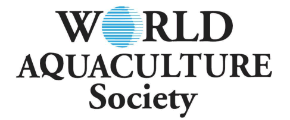AN OVERVIEW OF DESERT AQUACULTURE IN NORTH AFRICA
The North African countries (Egypt, Libya, Tunisia, Algeria and Morocco) have a climate with low annual precipitation (from 25 to 200 mm) that meets the criteria to be classified as 'desert'. The low rainfall can at most support a very scanty shrub. The desert covers more than 30% of land area of the five countries. Aquaculture production in the five North African countries has increased 2.2 times in the last ten years (2005-2014), from 0.55 in 2005 to 1.15 million tonnes in 2014. Together the five states contributed 67.4% of the total aquaculture production of the African continent in 2014 (FAO, 2016).
The arid aquaculture facilities in Algeria, Egypt and Tunisia are located inland and use both freshwater and brackish water to produce a variety of ornamental and edible fish such as Nile tilapia (Oreochromis niloticus), North African catfish (Clarias gariepinus), whiteleg shrimp (Litopenaeus vannamei) and micro-algae (mainly Spirulina spp.) for biofuels and fat extracts. In the last two decades, the integration of aquaculture with agriculture has become more popular in areas where water is a limited resource. Such integrated systems can produce a source of cheap quality protein and fresh vegetable products with reduced water requirements. Desert aquaculture can provide social benefits, assuring an improved public health and food security for desert communities.
Different examples of desert aquaculture projects using warm geothermal ground water (fresh and brackish) are provided in this paper. In Algeria, water from extensive Nile tilapia culture is used to irrigate small-scale agriculture production; intensive Nile tilapia and North African catfish culture are practiced using Flow-Through and Recirculation Aquaculture Systems, with the addition of whiteleg marine shrimp production using biofloc technology. In Egypt, fresh underground water is exploited for integrated intensive tilapia culture associated with catfish, alpha-alpha (fodder) and sheep production. Intensive culture of European seabass (Dicentrarchus labrax) using underground water (26 ppt salinity) is integrated with halophyte plants (Salicornia spp., Mediterranean salt brush Atriplex halimus and sea blite Suaeda vermiculata,) as fodder crops to feed sheep. In Libya, the great potential of desert aquaculture development is considered in association with the Great Man-Made underground network <https://en.wikipedia.org/wiki/Underground_mining_%28hard_rock%29> of pipes <https://en.wikipedia.org/wiki/Pipe_%28fluid_conveyance%29> (2 820 km) and more than 1 300 wells <https://en.wikipedia.org/wiki/Water_well> supplying 6.5 million m3 of freshwater <https://en.wikipedia.org/wiki/Fresh_water> per day in the Libyan Sahara <https://en.wikipedia.org/wiki/Sahara>. In Morocco, desert aquaculture started in 2004 and consisted particularly in marine coastal culture of shellfish and exploited by nine shellfish farms which have produced 378 tonnes in 2014. The Pacific oyster (Crassostrea gigas) and the grooved carpet shell (Ruditapes decussatus) are cultured in the tidal zone of Dakhla bay (Atlantic coast). In addition land-based marine desert aquaculture is under evaluation to assess the potential use of lowlands (called Sebkhas). In Tunisia, the production of Nile tilapia started in the 1970s using the extensive desert aquaculture system in the oasis south of the country and was followed in 2001 by a UNDP integrated agriculture aquaculture project. The production is still low reaching 20 tonnes of Nile and red tilapia in 2015. This document also provides a summary of main issues and constraints affecting the development of aquaculture in the dry inland and marine coasts of North African countries.










